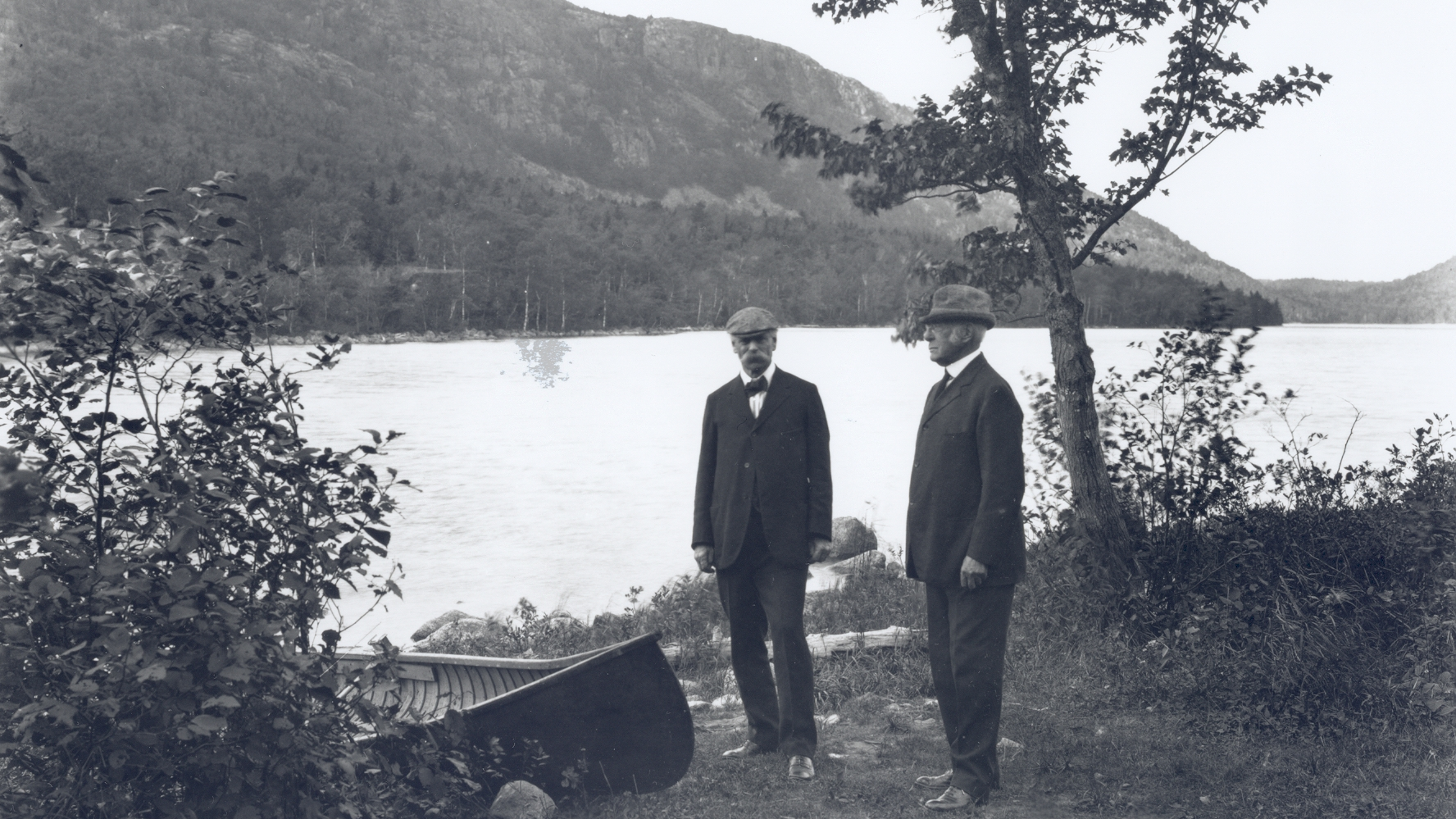
Courtesy National Park Service/Acadia National Park After the colonization of Mount Desert Island and the subsequent settlers were joined by rusticators (wealthy summer residents and tourists), the communities of Mount Desert Island (MDI) and the surrounding area grew. The increased in tourist presence and large summer residences put pressure on the island infrastructure. In the late 1800s, various summer and year-round residents formed civic groups to manage the development. Their concerns ranged from sanitation and cultural events to the building of hiking trails. Philanthropy & Civic GivingThe formation of the Hancock County Trustees for Public Reservations and the Village Improvement Associations were landmark moments in the formulation of Acadia National Park. Though they may not have envisioned their own 'America's Best Idea' in their backyard when they formed, these groups built an island wide trail system and their wealthiest members gathered together to purchase land that would later be donated to the United States government to make a national park. Women PhilanthropistsThough much of the activities surrounding the civic groups that created Acadia excluded women and people of color, and sometimes directly targeted them, many of the land donors were women. Longtime summer resident of Bar Harbor, Eliza Homans donated 140 acres of land which included the Bowl, the Beehive, and the south side of Champlain Mountain. This was the first land donation to HCTPR, starting the momentum for subsequent land donations and purchases to what would later become Acadia National Park. Many wealthy women would follow in Eliza's footsteps to donate important tracts of land to future generations.Federal Designation and BeyondProminent members Charles W. Eliot and George B. Dorr joined philanthropist and summer resident John D. Rockefeller in pursuing national park status, and in 1916, presented 5,000 acres to the American people in the form of a national monument, penned into existence by President Woodrow Wilson. Dorr presented 5,000 acres of land to the federal government, and in 1916 President Wilson announced the creation of Sieur de Monts National Monument. More property was acquired and Dorr continued efforts to obtain full national park status for the monument. In 1919, President Wilson signed the act establishing Lafayette National Park and Dorr became the first park superintendent. Congress authorized the National Park Service to accept a donation of land on the Schoodic Peninsula in 1929 when the park’s current name, Acadia National Park, was adopted. A Conservation LegacyAcadia National Park was the first national park created from private lands gifted to the public through the efforts of conservation-minded citizens. These efforts contributed to the creation and development of the land conservation movement. These conservation efforts continue today through the stewardship of what is today the largest conservation easement program in the national park system and generous private philanthropy. More About Founding Acadia National Park |
Last updated: December 21, 2023
